Pictures › Wildlife › People & Places › Country Know-how › Food
TAKING THE HELM

From the summit of Helm Crag, a walker watches the sun rise over the mist-filled valley of Grasmere in the Lake District. At only 405m, Helm Crag is a modest height, but its distinctive rock formations make it a popular landmark. Also known as the Lion and the Lamb, the summit is easily reached by most walkers. Wainwright wrote of it: “The virtues of Helm Crag have not been lauded enough. It gives an exhilarating little climb.”
RED SKY WARNING
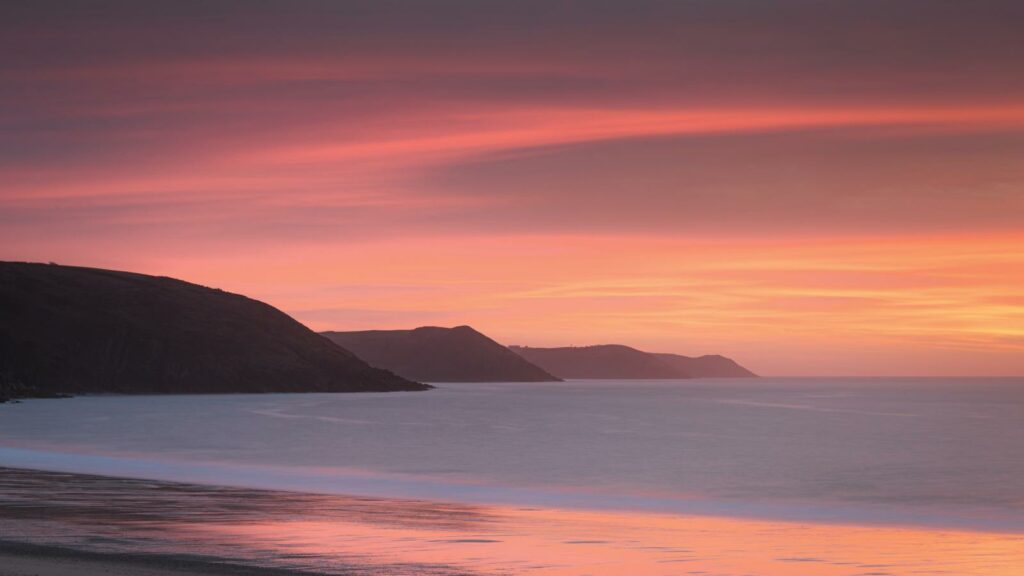
Sweeps of crimson, violet and indigo fill the sky and reflect off the glinting sand as dawn breaks over Freshwater East in Pembrokeshire. In the 18th century, smugglers operated from this beach and stashed contraband in the cliffs.
STERLING MOSS
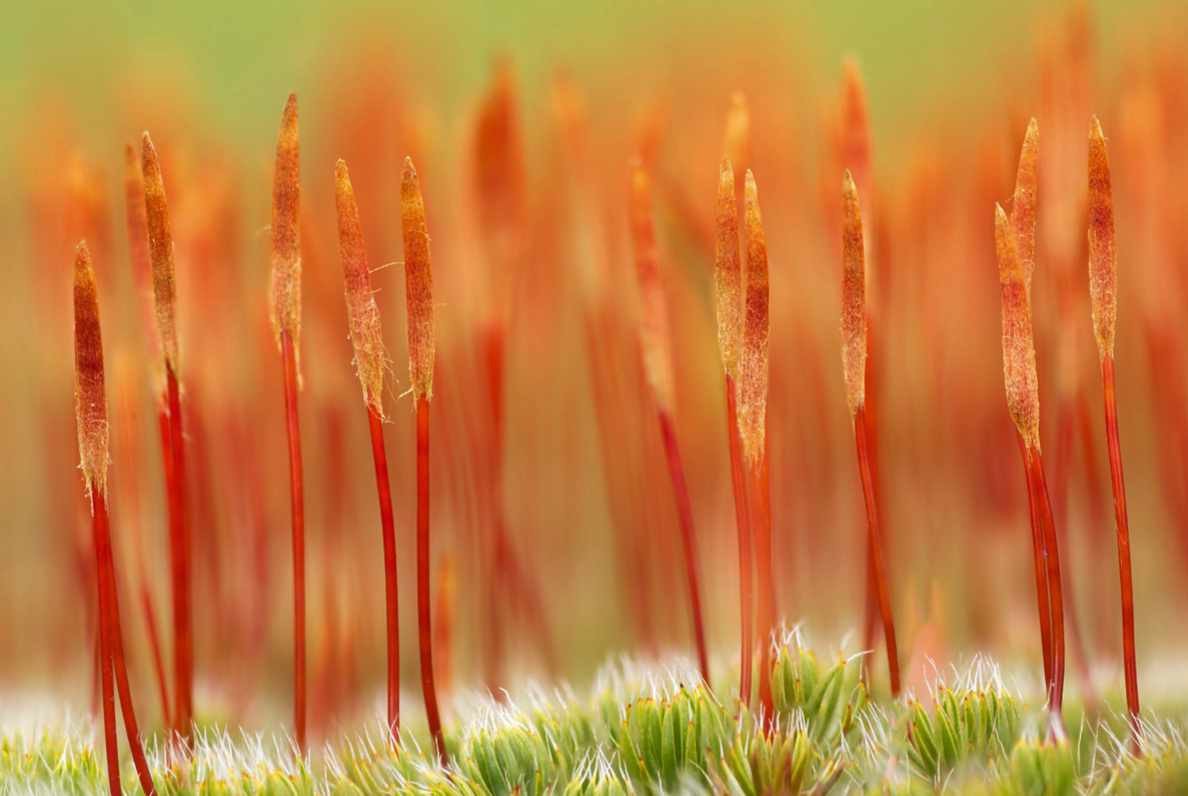
The vivid orange shoots of bristly haircap moss (Polytrichum piliferum) emerge on a stone wall in Catbrook, Monmouthshire. These are the moss’s male reproductive organs and form beautiful florets of leaves. Late winter is an excellent time to get to know such overlooked treasures when other flora lies dormant.
WATCH THE BIRDIE
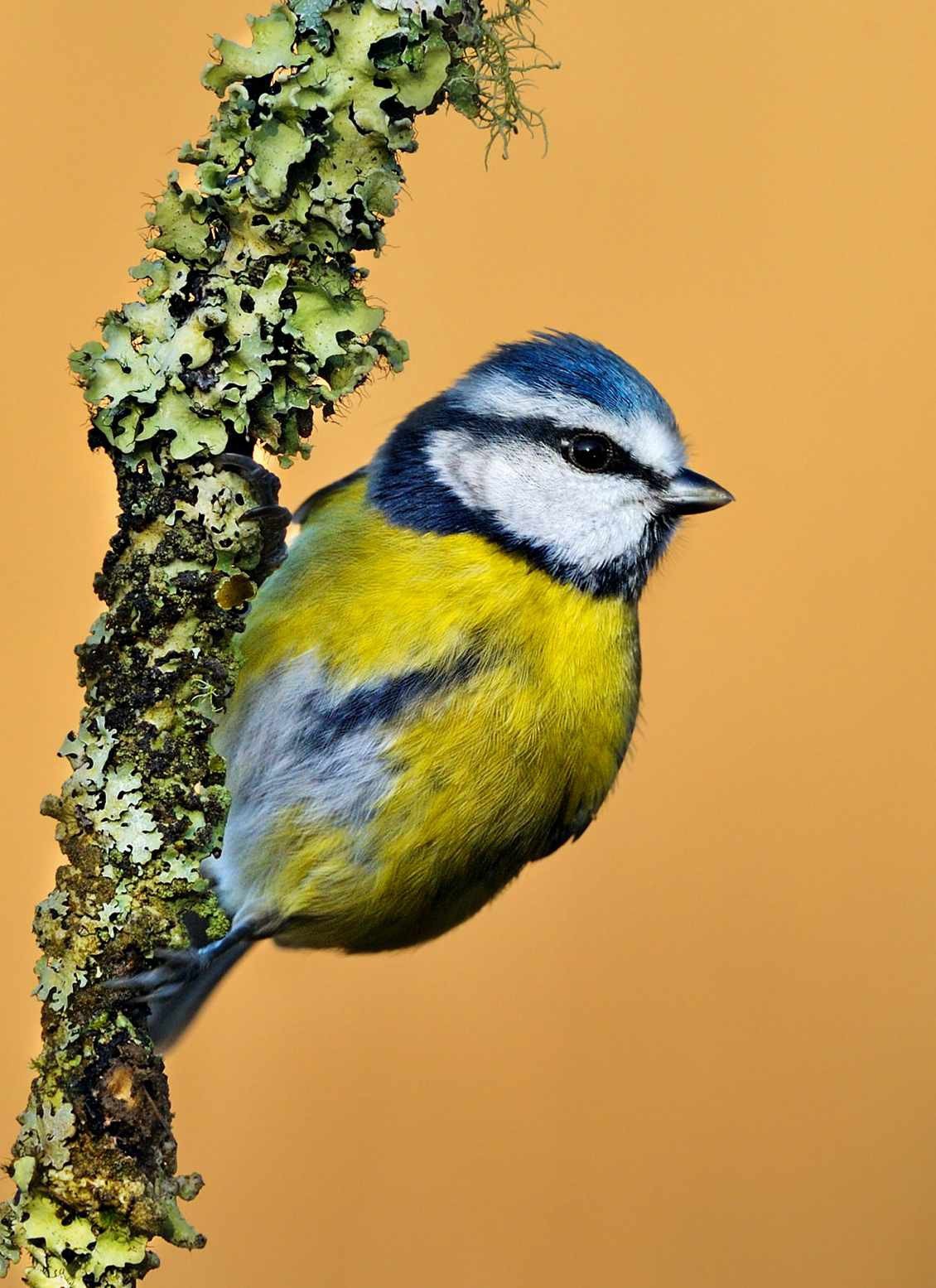
The RSPB’s Big Garden Birdwatch, on 23–27 January, has become an important annual measure of our bird populations. All you have to do is spend an hour watching birds in your garden, make a note of the species you see – such as this blue tit – and tell the RSPB what you have seen. Register to take part at rspb.org.uk
THE OLD WAYS
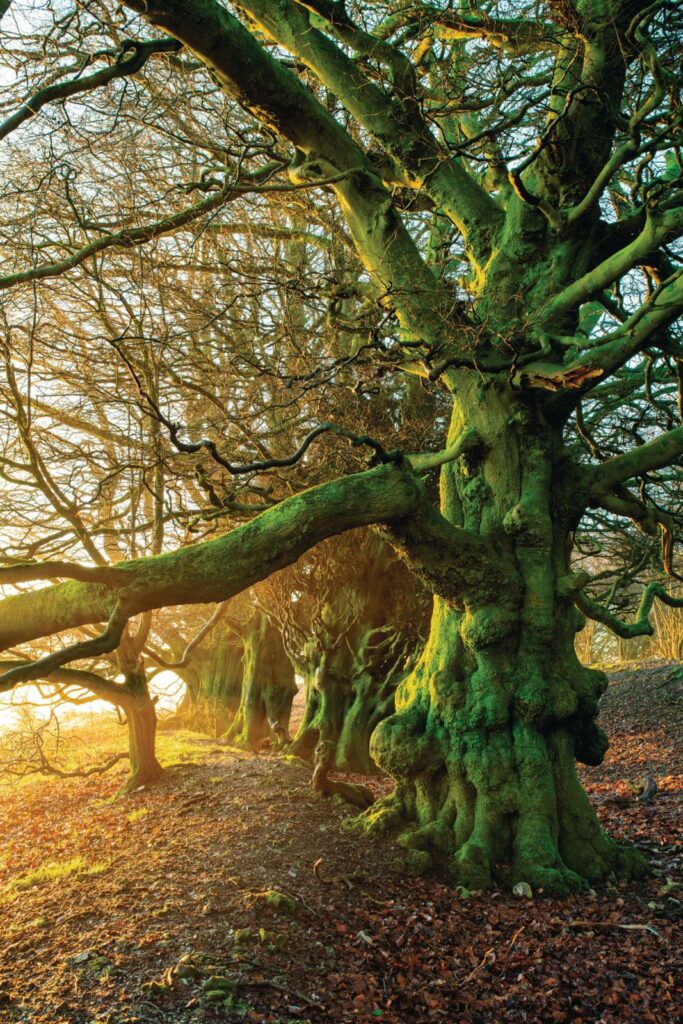
A golden sunrise seeks its way through the tangled limbs of mighty beech trees growing in the outer ramparts of an Iron Age hillfort. This is Martinsell Hill, on the southernmost edge of the Marlborough Downs in Wiltshire – a remote ridge that exudes ancient stories and atmosphere. Just below the hillfort lies the mysterious linear prehistoric earthwork known as Giant’s Grave.
Don’t miss
DARK SKIES FESTIVALS
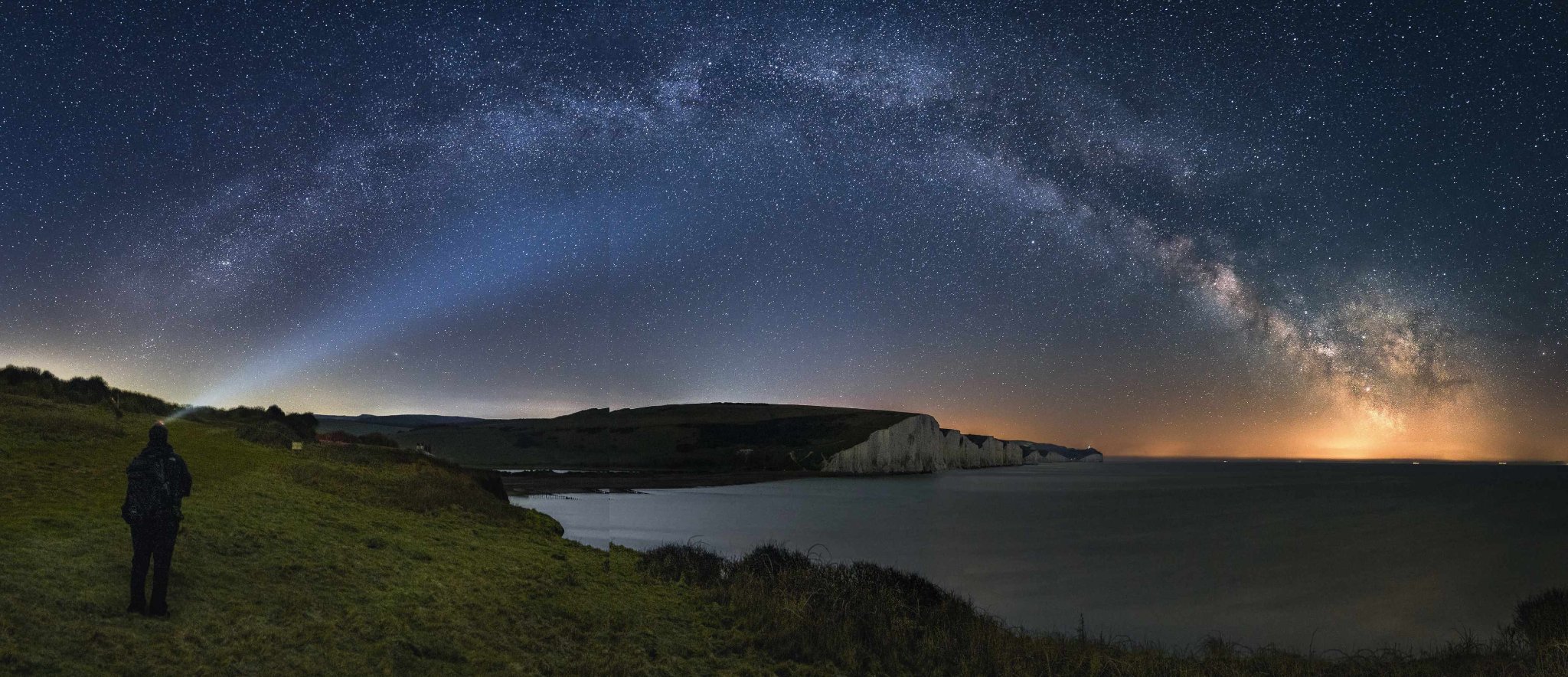
Did you know you can see as many as 2,000 stars in the night sky in Britain’s darkest places, such as our national parks and AONBs? Throughout February, a series of dark skies festivals will be taking place across the UK, helping you make the most of this incredible natural wonder. Cycling, walking, running, caving, kayaking, nocturnal wildlife watching and stargazing safaris are all on offer. Here are three festivals to enjoy:
• SOUTH DOWNS DARK SKIES FESTIVAL 4–17 February southdowns.gov.uk
• NORTH YORK MOORS AND YORKSHIRE DALES 10–26 February northyorkmoors.org.uk
• WELSH DARK SKIES WEEK 17–26 February discoveryinthedark.wales
Love is in the air Celebrate the riches of the night sky this February with your Valentine.
Wildlife watch…
BRAND NEW BADGERS
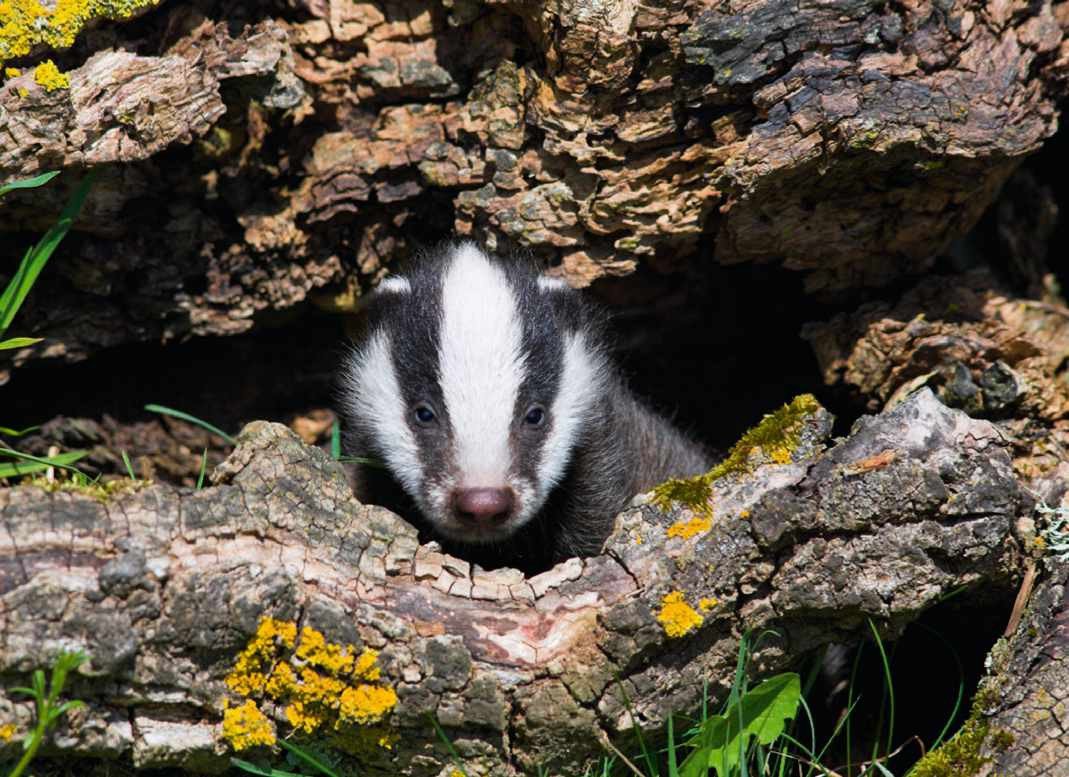
It’s a busy month in the badger sett – the chilly last days of winter may seem a strange time to give birth, but the majority of badger sows have their cubs in the first half of February, after only six to seven weeks of gestation. This means the cubs are ready to appear above ground in mid-spring, when food is abundant. February is also the peak month for mating, but delayed implantation means fertilised eggs stay in the sow’s uterus until a trigger factor causes implantation, usually in late December.
This month on the Plodcast
New season of Plodcasts for you to enjoy – for free
Tune into our new season of Plodcasts, beginning January 2023, where we are sharing some of our favourite wild places and looking at how fresh air and walking are so good for body and soul. Special guests include: singer and BBC broadcaster Cerys Matthews, environmentalist George Monbiot, archaeologist Mary-Ann Ochota, historian and folklorist Amy Jeffs, poet Kenneth Steven and more. We’ll be exploring landscapes and ancient sites full of atmosphere and wildlife – and helping you find a bit of calm and beauty this winter. Search for Plodcast on Spotify, Apple Podcasts or whatever podcast provider you use. You can email the Plodcast team at editor@countryfile.com. The best email of the week will receive a special Plodcast book of nature and the countryside.
THE SEASONAL TABLE: NETTLE TEA
First forage of the season

To some it’s a weed that causes pain; to others, it’s a medicine that cures it. Personally, I believe we should be cramming nettles into our diets however we can. Not only are they free, they are also really abundant, delicious and super for our health. Research suggests nettle tea can help fight infections, reduce pain and swelling, lower blood pressure and stabilise sugar levels, and that it is packed with powerful antioxidants. In the spring, I like to make it with fresh nettle tops. They have such a good flavour. I also pick enough to dry, so I can enjoy this tea all year.
SERVES 2 INGREDIENTS
• A large handful of fresh nettle tops or half a handful of dried nettles
• Half a lemon
• Runny honey, to sweeten (optional)
METHOD
1. Place a metal teapot or saucepan over the fire (or stove) and add 1 litre of water.
2. When the water comes up to a simmer, add the nettles. Slice the lemon half and add this, too.
3. Remove the pot from the fire (or stove) and allow the tea to brew for 5–10 minutes before drinking. You can sweeten the tea with a touch of honey, if you like.
NEW TRAIL OF THE MONTH
THE COAL CANAL WAY, SOMERSET 10.6 miles
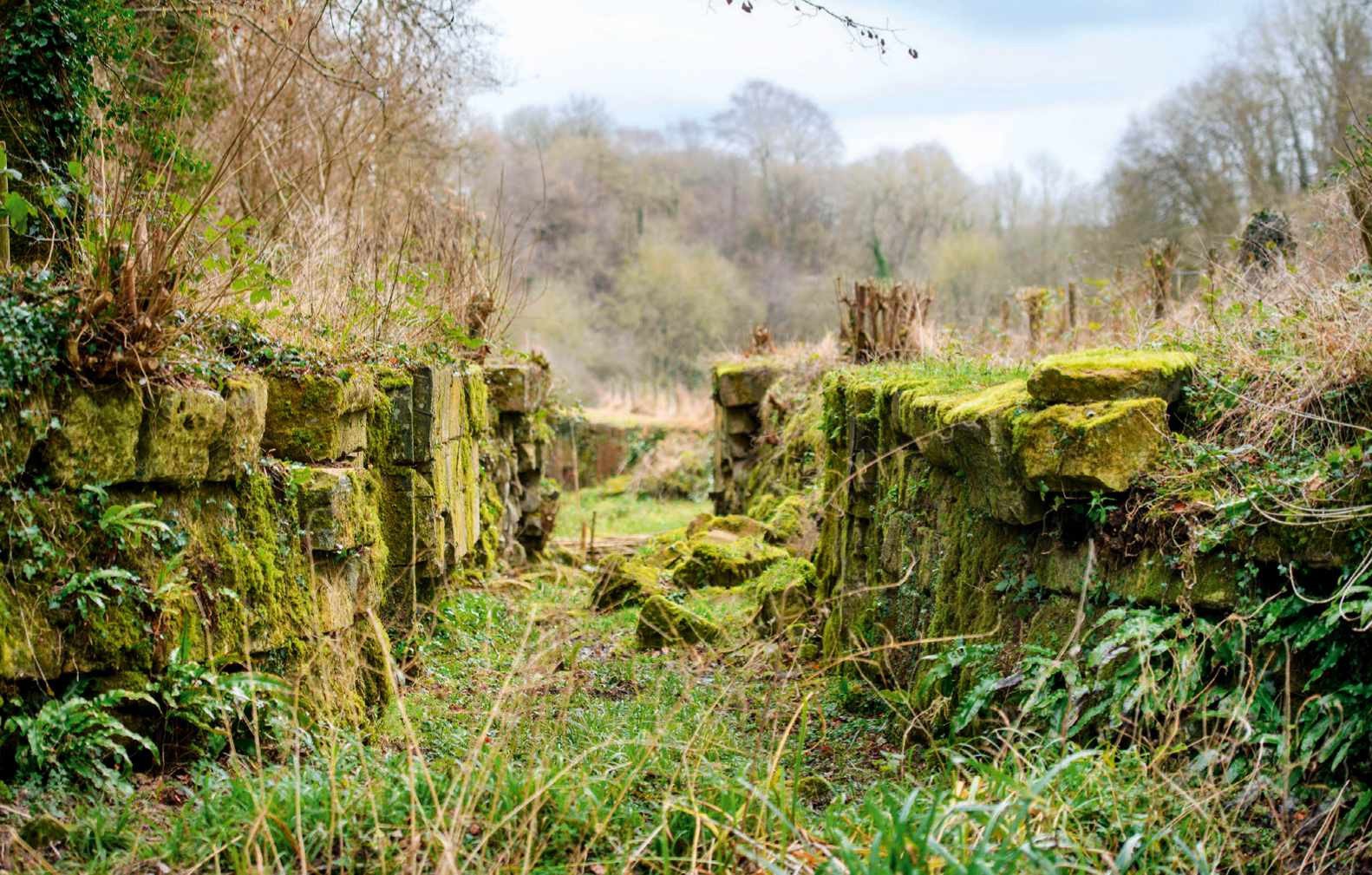
Once one of England’s most profitable canals, the northern branch of the now disused Somersetshire Coal Canal is the route of a new walking path, the Coal Canal Way, taking in many fascinating sites of the area’s industrial past. The route is a series of tranquil walks which, when taken together, cover 10.6 miles, from Paulton to Dundas. Look out for boat weighing machine Weight-House C, aqueduct tunnels and former coal pits . coalcanal.org
25 JANUARY
DYDD SANTES DWYNWEN
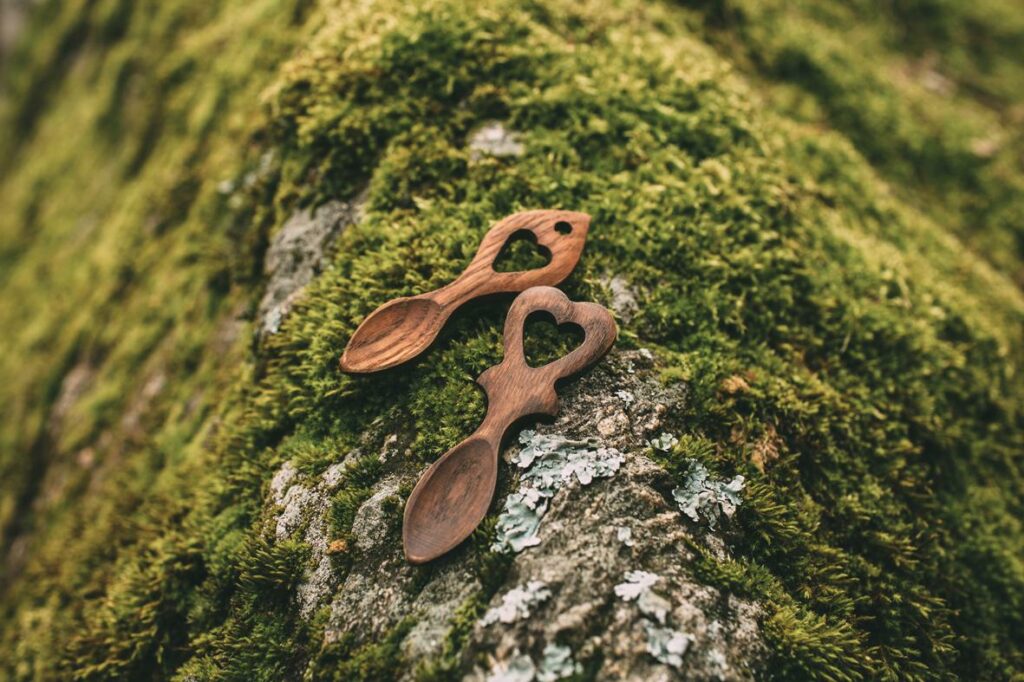
Dydd Santes Dwynwen (Saint Dwynwen’s Day) is the Welsh patron saint of lovers. A fourth-century Welsh princess, Dwynwen was forbidden to marry the man she loved. It’s said God granted her three wishes and she asked him to help all true lovers.
ABOVE Traditionally, a carved Welsh love spoon is given as a gift on Saint Dwynwen’s Day
Make do and mend
HOW TO FIX A ZIPPER
Mending zippers on your outdoor kit may well be the most satisfying of all home repairs. Here’s how to do it. You will need: needle-nose pliers

1 Ever zip up your jacket, trousers or backpack, only for the teeth to separate and pull back open? You could go to the expense of replacing the whole zipper, but often all you need to do is tighten the slider. It’s free, quick and easy to do.
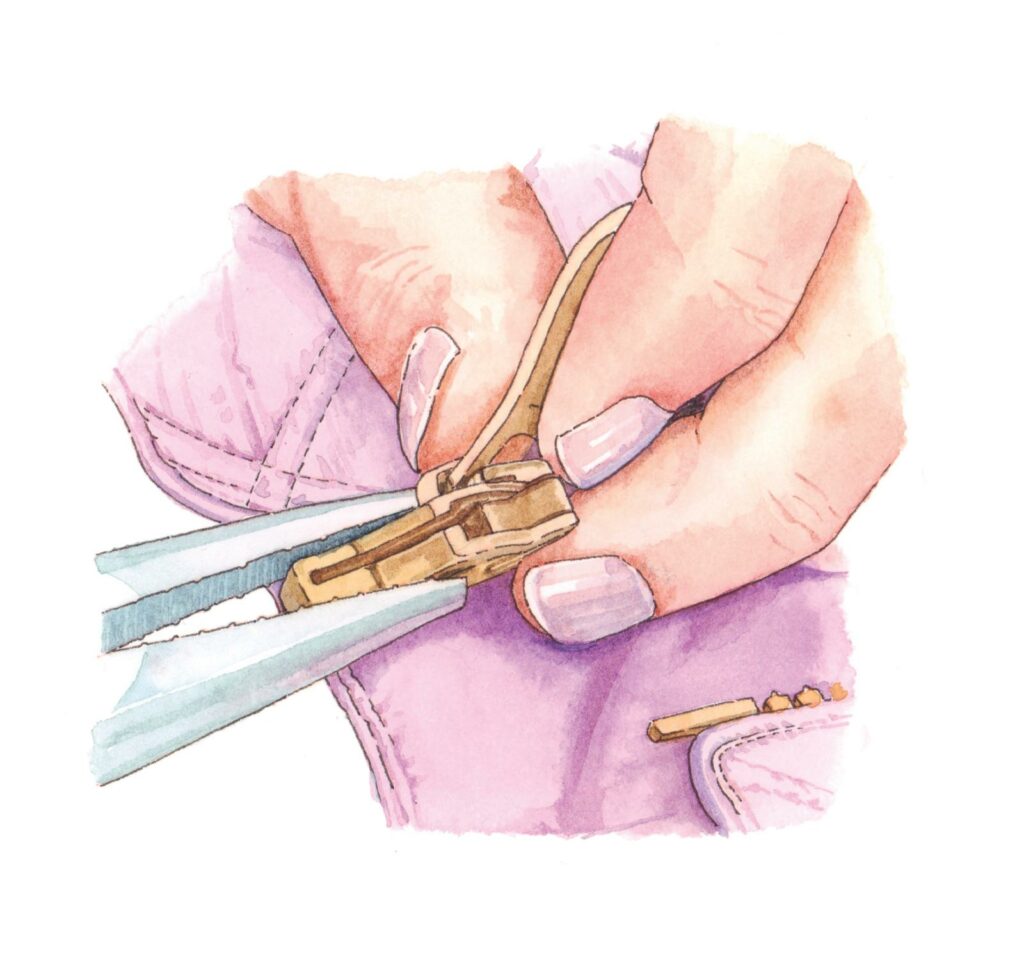
3 Take the needle-nose pliers and squeeze the mouth of the slider to tighten it to its original position. You may need to do this on both sides of the slider. It’s important to do this gently and a little bit at a time – if you tighten it too much the slider won’t pull up.
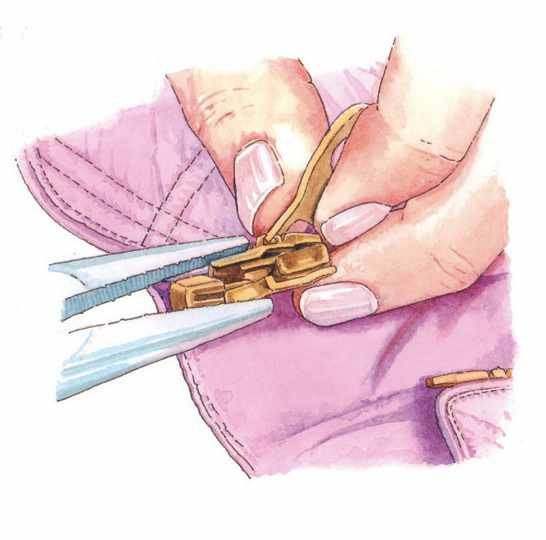
2 Pull the slider right down to the bottom stop. Over time, the mouth of the slider can open slightly, meaning the teeth don’t bite together properly when the slider is pulled up. It’s often this that causes the zipper to separate (though not always).

4 Test the zipper, and tighten the slider a little bit more if needed. You should now have a working slider that binds the teeth of the zipper properly from top to bottom.
ID guide
COMMON SEAWEEDS OF THE BRITISH COAST
From microscopic phytoplankton to forests of kelp, seaweed is a valuable food source for wildlife and provides important shelter for many marine creatures. A late winter’s walk is the perfect time to get to know these nine species.
By Ajay Tegala, wildlife presenter, countryside ranger, and author

OARWEED
Laminaria digitata The most common kelp species in the UK, oarweed can grow more than two metres long, at depths reaching 10 metres.
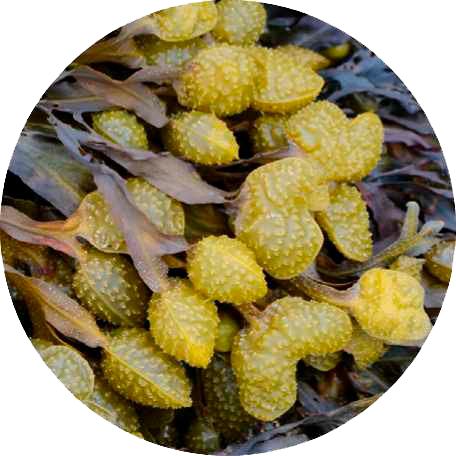
SPIRAL WRACK
Fucus spiralis Common just below the high waterline on rocky shores, it has no bladders. It produces a mucus and curls up to conserve moisture.

THONGWEED
Himanthalia elongata Also called sea spaghetti, this is one of the UK’s longest native seaweeds. It grows close to the low tidemark on rocky shores.

TOOTHED WRACK
Fucus serratus Grows just above the low tidemark. Brown seaweeds are high in vitamin C and iodine. Dried toothed wrack is used as a condiment.

CHANNELED WRACK
Pelvetia canaliculata This wrack is found at the top of rocky shores and can survive up to eight days out of water. It curls at the sides, creating channels.

GUTWEED
Ulva intestinalis Found in many habitats, including rock pools, sand and mud. Dense mats of gutweed form valuable shelter for marine creatures.

BLADDER WRACK
Fucus vesiculosus Growing in the inter-tidal area, this wrack has pairs of round bladders that help it float. Boiled bladder wrack can ease swollen joints.

KNOTTED WRACK
Acophylym nodosum Another common brown seaweed dominant on sheltered rocky shores, this wrack has large egg-shaped air bladders to help it float.

SEA LETTUCE
Ulva lactua Grows in sheets in inter-tidal parts of rocky shores and estuaries and is the most tender UK seaweed. Can be deep fried to make crisps!
21 FEBRUARY
Shrove Tuesday
PANCAKE RACE

Get your best pan out for a Shrove Tuesday Pancake Race, held in many villages across the UK. The most famous pancake race takes place in Olney, Buckinghamshire, where it’s said the tradition started in 1445, during festivities on the day before Lent. The women of the town run 196 metres, pan in hand, to reach the door of the church. Last year’s winner Kate Godof reached the finish in a mere 70 seconds!
See our pancake recipes: countryfile.com/how-to/food-recipes/vegetarian/ easy-pancakes
Countryfile on TV
BBC ONE, SUNDAYS
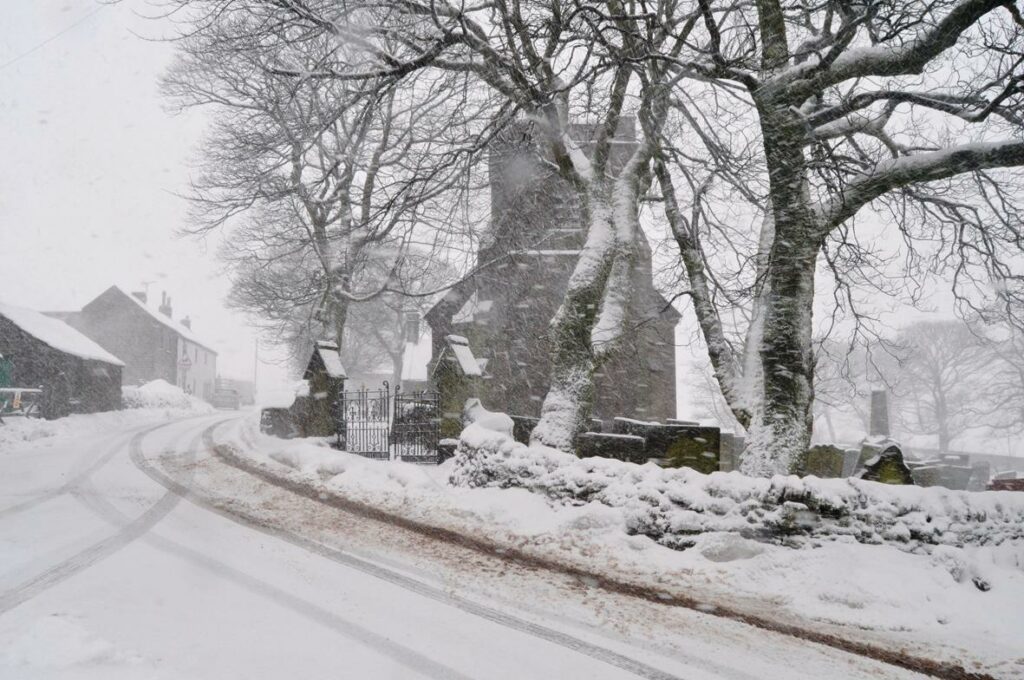
22 January Anita Rani and Joe Crawley are in Flash, Staffordshire (above), the highest village in Britain, to see how villagers cope with winter. 29 January Charlotte Smith and Steve Brown talk to fledgling farmers to find out what it takes to break into farming. 5 February Sean Fletcher explores Cornwall’s underground heritage.